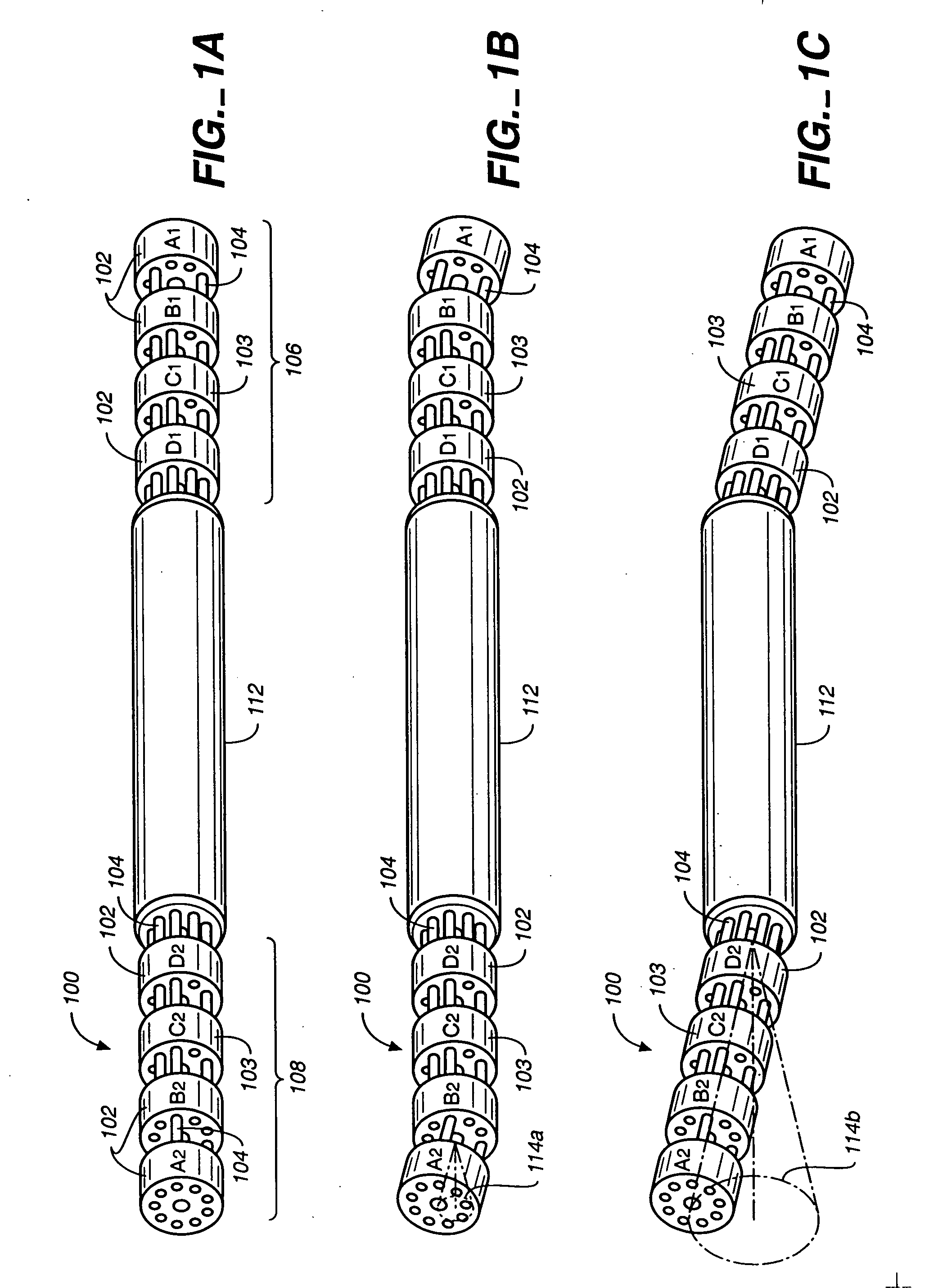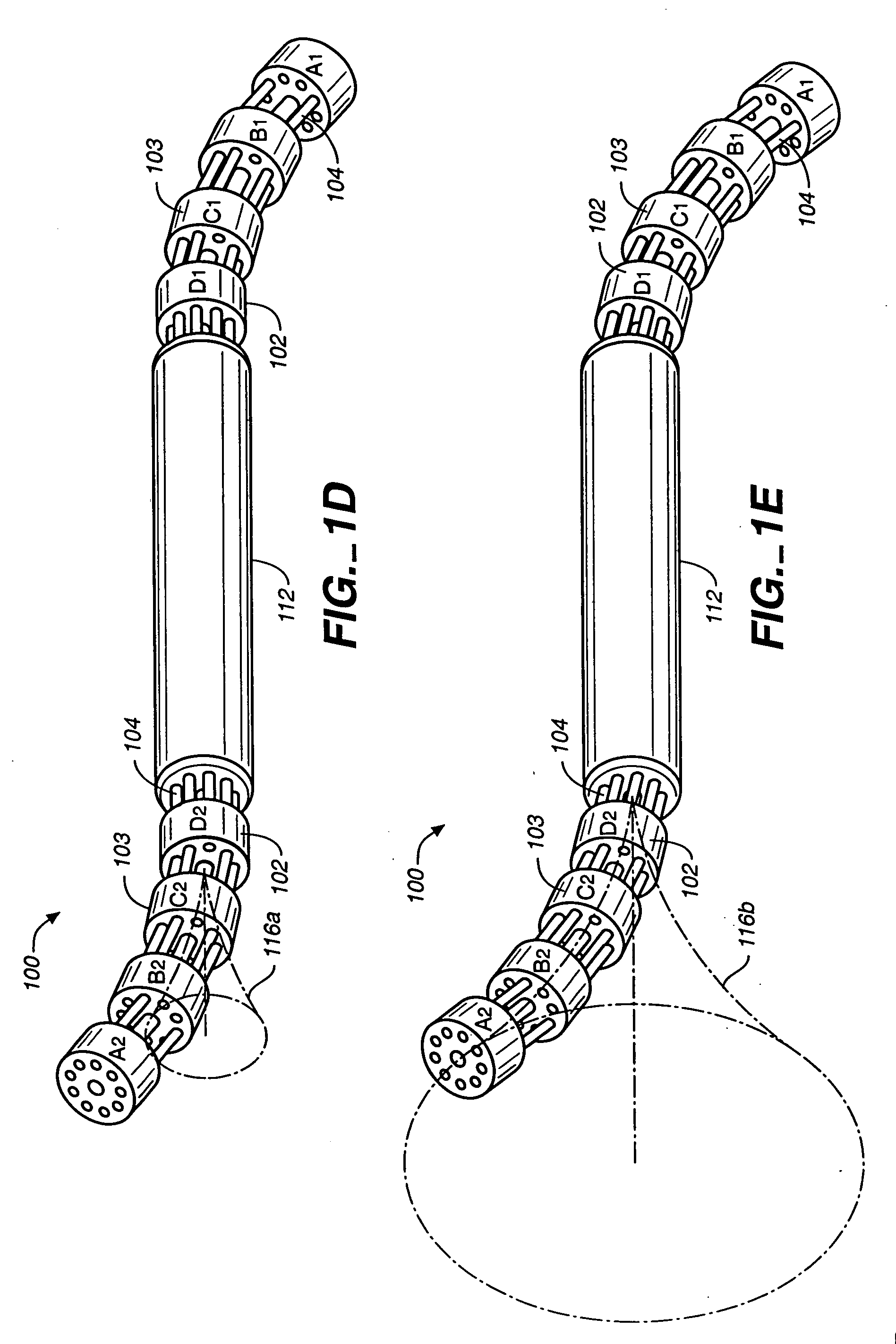Articulating mechanism for remote manipulation of a surgical or diagnostic tool
a technology of articulating mechanism and surgical or diagnostic tool, which is applied in the field of remote guidance and manipulation of surgical or diagnostic tool tools, can solve the problems of increasing the risk of trauma to surrounding tissues, increasing patient discomfort, and difficulty in achieving optimal retraction of organs and maneuverability of conventional instruments through laparoscopic ports, and achieves the effect of actuating or facilitating the actuation of such instruments and tools
- Summary
- Abstract
- Description
- Claims
- Application Information
AI Technical Summary
Benefits of technology
Problems solved by technology
Method used
Image
Examples
Embodiment Construction
[0030] Articulating mechanisms according to the invention generally include multiple pairs of links or segments and multiple sets of cables. The articulating mechanisms may be made from individual, spaced apart segments, i.e., links, or from segments formed from a continuous flexible member. The terms “link” and “segment” as used herein refer to a discrete portion or defined area at one end of the mechanism that corresponds to another discrete portion or defined area at the opposite end of the mechanism. In any event, the articulating mechanism will include a plurality of links or segments that are members of discrete pairs. The links or segments form a proximal end and a distal end, with one link or segment of each pair being situated at the proximal end, and the other link or segment at the distal end. As further described below, links or segments formed from a continuous flexible member may be in the form of, e.g., a continuous tube, or may be situated in, e.g., a helical arrange...
PUM
 Login to View More
Login to View More Abstract
Description
Claims
Application Information
 Login to View More
Login to View More - R&D
- Intellectual Property
- Life Sciences
- Materials
- Tech Scout
- Unparalleled Data Quality
- Higher Quality Content
- 60% Fewer Hallucinations
Browse by: Latest US Patents, China's latest patents, Technical Efficacy Thesaurus, Application Domain, Technology Topic, Popular Technical Reports.
© 2025 PatSnap. All rights reserved.Legal|Privacy policy|Modern Slavery Act Transparency Statement|Sitemap|About US| Contact US: help@patsnap.com



